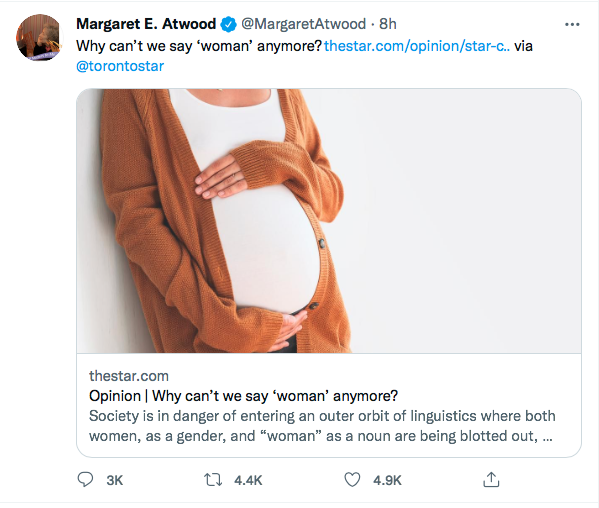Before and after the recent Forstater v CGD (2021) case, there was a torrent of speculative commentary about what this meant both for trans people and gender critical people when it came to harassment under section 26 Equality Act 2010.
On 27th April 2021, barrister Robin Moira White wrote in the Independent:
“It will mean, for example, that a person will be permitted to misgender a trans work colleague, indeed be legally protected if they do so. This puts employers in an impossible position where one employee is entitled to harass another, likely making the employer liable to the harassed employee for discrimination. It is both morally wrong and practically unworkable: employers will not be able to meet their duty of making workplaces safe to work in or public spaces safe to visit. “
Thankfully, this pessimistic prediction was proved wrong. The Employment Appeal Tribunal stressed that its judgment didn’t mean open season for people to harass trans people. It could have added “and the same goes for gender critical people.”
In practice, what Forstater established was that both gender identity theory and gender critical feminism are protected as beliefs under s10 EA.
But what does that mean in practice regarding protection against harassment? Is “misgendering” (calling a transperson by a pronoun that signifies their biological sex) or calling someone a TERF (an offensive term to many) or “bigot” unlawful harassment?
The classic and annoying lawyers’ answer… it depends!
So how to decide if something is unlawful harassment?
First of all, some important caveats: I am talking about civil law, not criminal law. This isn’t about hate crime or other forms of harassment (say under the Protection from Harassment Act).
This piece is not about whether it is right or wrong that something is considered unlawful harassment, but my best guess about what a court or Employment Tribunal will determine.
Context
This guidance is not relevant in all situations, only for those set out in the Equality Act. So it applies in work, education, political parties, larger membership organisations, some transport and some housing. It doesn’t apply between private people, say in the streets, unless one of them is working. That may be covered by other law, but is outside the scope of this blog. S29(8) states that, with regard to services to the public and public functions , neither the protected characteristics of religion and belief and sexual orientation are covered by the sections on harassment. ‘Harassing’ conduct related to religion or belief or sexual orientation which causes a detriment is covered by direct discrimination protection.
Which protected characteristics are covered?
Age, disability, race, sex, sexual orientation, gender reassignment and religion or belief are all protected against unlawful harassment. Marriage and civil partnership, and pregnancy and maternity, are not – although the latter is effectively covered against harassment via a different route in s17 and 18 Equality Act.
What does the law say ?
The Equality Act says the following:
“26 Harassment
(1)A person (A) harasses another (B) if—
(a)A engages in unwanted conduct related to a relevant protected characteristic, and
(b)the conduct has the purpose or effect of—
(i)violating B’s dignity, or
(ii)creating an intimidating, hostile, degrading, humiliating or offensive environment for B.
(2)A also harasses B if—
(a)A engages in unwanted conduct of a sexual nature, and
(b)the conduct has the purpose or effect referred to in subsection (1)(b).
(3)A also harasses B if—
(a)A or another person engages in unwanted conduct of a sexual nature or that is related to gender reassignment or sex,
(b)the conduct has the purpose or effect referred to in subsection (1)(b), and
(c)because of B’s rejection of or submission to the conduct, A treats B less favourably than A would treat B if B had not rejected or submitted to the conduct.”
So let’s break it down:
“Unwanted conduct” means the person alleging harassment didn’t consent to it. It is aimed at avoiding liability for genuine give-and-take banter. This does not mean the sort of bad defence used by obvious harassers to seek to exclude insults, but rather a hug between old friends, affection between consenting romantic partners, or a genuinely equal debate about politics in the canteen between colleagues, for example.
“Related to a protected characteristic” means you don’t have to have that characteristic to be harassed; but there must be a link between the words, actions etc and the protected characteristic. This sort of harassment isn’t about generic bullying.
“Conduct has the purpose or effect”. If the evidence shows the alleged harasser intended for the words or conduct to be harassing (usually determined as such because it is obvious for those words or conduct were the sort purposefully used to harass), that is then immediately proved.
If, instead, it is argued that, whether or not it was intended, the effect was harassing, then there is a further test in s26(4) Equality Act, as follows:
“(4) In deciding whether conduct has the effect referred to, each of the following must be taken into account—
(a)the perception of B [person alleging harassment];
(b)the other circumstances of the case;
(c)whether it is reasonable for the conduct to have that effect.”
In legal terms this is known as an objective, subjective test. The test is not just whether the claimant perceived harassment, but whether that is a reasonable perception. A person who is frequently late to work may feel harassed by their boss reminding them not to be late on consecutive days, but it would not be reasonable for the reminders to amount to harassment. On the other hand, a person who has ADHD but is rarely late may well be harassed by an employer singling them out every evening with the words “Remember to be on time tomorrow – we know how ditzy you ADHDers are!”
“Violating dignity etc”
This is exactly as described.. A court or tribunal needs to be satisfied that one of these descriptors could be applied to the situation evidenced.
In this piece I am not going to discuss s26(2) and (3), but it is worth noting the wording.
Very case specific
The result of this is that there are no glib equations to provide a bright line between conduct which is and is not harassment. It really depends on context and framing.
In the context of the gender critical/gender identity context, my predictions are that:
1. Simply wearing a rainbow lanyard or putting one’s own preferred pronouns in your emails at work will not amount to harassing someone else; but reporting someone to management who simply chooses not to, due to their beliefs, might well be harassment,
2. Setting up a Gender Critical or Gender Studies Research Group will likely not be an act of harassment; but campaigning against colleagues doing so might be harassment.
3. Responding politely with one’s own views to a consultation about single sex or mixed gender facilities will not be harassment; indeed complaining to management about someone about their polite answer might well be. In the case of Mbuyi v Newpark Childcare (2015), the Employment Tribual found in favour of Sarah Mbuyi, an evangelical Christian, who was dismissed by her employer, Newpark Childcare, for harassment following a discussion with a lesbian colleague in which Mbuyi said that homosexuality was a sin. The tribunal said that Mbuyi had not harassed her colleague as there was no evidence of unwanted conduct, because Mbuyi had given her views after being asked for them.
4. Calling a colleague a TERF or intentionally misgendering them may well be held to be harassment. This is distinct from accidental misgendering, because the choice of pronoun is unknown to the speaker or because the speaker’s disability causes them not to remember such things;
5. Discussing politely and personally on social media whether the law should be changed to self ID is likely not to be, unless there is evidence of risk that this may lead to actual discrimination or harassment. Some support for this contention is given in two cases not directly relating to harassment but addressing the risk of that happening going forward. The Court of Appeal in Ngole v Sheffield University 2019 (a case concerning an evangelical Christian student social worker who was expelled from his university course after expressing “Biblical views” on social media about homosexuality) said at para 129 “such a blanket ban on the freedom of expression of those who may be called “traditional believers” cannot be proportionate” . It was notable that the University had accepted there was no evidence of intention to discriminate against gay people by Ngole. This is in contrast to Dr Mackereth in DWP v Mackereth (2019) who made it clear that his particular Christian belief meant that he did have an issue using pronouns inconsistent with the service user’s birth gender [sic]. It later became clear that it also extended to using a title or style of address, Mr, Mrs, Ms, Miss etc inconsistent with the service user’s birth gender [sic]. Dr Mackereth failed in his claim. Whilst it is under appeal, my view is that an appeal is unlikely to succeed.
5. Proselyting to colleagues or service users about one’s gender critical or gender identity beliefs is likely to be harassment, in a similar way to cases involving religious proselytising like Haye v Lewisham BC (2010) and Amachree v Wandsworth Borough Council (2010)) .
In each of these cases, the judge considered the facts carefully and conducted a balancing exercise of the basis of the facts to determine whether the employer had properly considered the employee’s right to manifest their belief. In those cases where the employer’s decision was upheld, it was generally because of the actual discriminatory impact of the employee’s actions on other people.
These cases also demonstrate that similar issues can be dealt with through good employer practice and employees understand what is expected of them. An employer can have a policy which places limits on discussions about religion or belief at work, but any restrictions on freedom of speech or manifesting religion or belief must be proportionate to achieving aims like protecting the rights of others or the reputation of the employer.
So if confronted with a complaint or grievance by someone alleging unlawful harassment, what sort of questions should you ask to determine if conduct amounts to harassment?
1. What was the context in which the alleged conduct occurred?
2. What does the complainant say happened?
3. What evidence is there of the consequences of the conduct on the complainant or others?
4. Why do they say it has the effect they claim? This goes to context.
5. What does the respondent say happened?
6. What are the relative power positions of the two?
7. What do any witnesses say?
8. Is there any other relevant evidence?
9. What do your office policies say about social media use, and what is deemed misconduct or discriminatory behaviour? Do those policies balance freedom of speech, belief and private life with legitimate employer concerns like risk of harassment of colleagues or service users?
10. Have there been previous warnings against this conduct and when?
Having gathered all this information, and weighed up whose evidence is more credible, it is for the decision maker to decide whether each of the allegations are more likely than not to have happened, and if so, to determine sanction.
Employers and service providers also need to check their policies and Equality and Diversity training materials to ensure there is no harassing content in there.
In summary, there is no simple equation of X=harassment but Y does not. Ultimately, it is a fact-specific exercise, where freedoms of speech and belief are balanced against the necessity to protect from harassment in the workplace.



